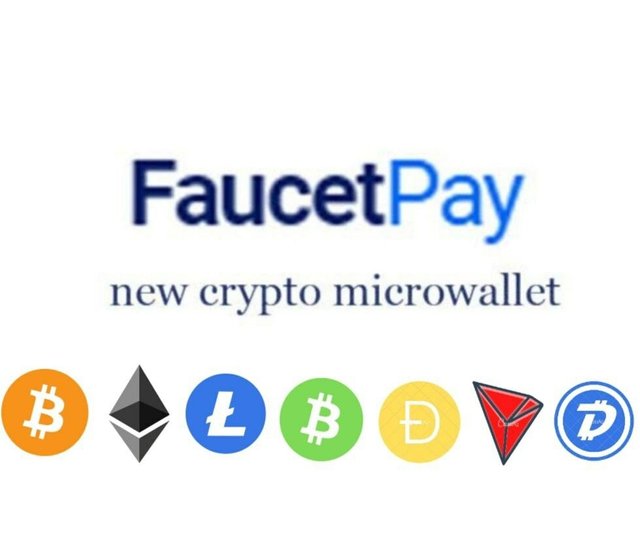How does FaucetPay support multiple cryptocurrencies for micro-earnings
FaucetPay supports multiple cryptocurrencies for micro-earnings through a combination of wallet aggregation, off-chain accounting, and blockchain optimization. Here's how it works technically and practically:
1. Centralized Wallet Pooling
- Off-Chain Ledger: FaucetPay holds master wallets for each supported cryptocurrency (e.g., BTC, ETH, DOGE). User "wallets" are virtual – balances exist only in FaucetPay's internal database until withdrawal.
- Microtransaction Aggregation: When you earn $0.0001 BTC from a faucet, it's added to your virtual balance. FaucetPay pools these microtransactions into larger UTXOs (for UTXO-based coins like BTC) or consolidated balances, minimizing on-chain fees.
2. Multi-Currency Wallet System
- Integrated Addresses: Users get a single FaucetPay ID with unique deposit addresses for each supported coin (e.g., separate addresses for BTC, LTC, TRX).
- Token Support: Handles both native coins (e.g., Bitcoin) and tokens (e.g., USDT on TRC-20/ERC-20) via smart contract integration.
3. Fee Optimization
- Low-Cashout Thresholds: Withdrawals start as low as 0.00000001 BTC (1 satoshi) or equivalent.
- Batch Processing: Withdrawals are queued and processed in bulk transactions, distributing fees across users. For example, 100 DOGE withdrawals bundled into one TX.
- Fee Subsidization: FaucetPay covers withdrawal fees for users (cost absorbed by faucet sites via platform fees).
4. Auto-Conversion Tools
- FaucetPay Exchange: Users can convert micro-earnings between coins (e.g., Dogecoin → Bitcoin) instantly at fixed rates.
- Preferred Payout Currency: Set a default coin (e.g., BTC) to auto-convert earnings from other currencies.
5. Supported Blockchains
Handles diverse consensus mechanisms:
- UTXO-based (Bitcoin, Litecoin): Aggregates inputs/outputs.
- Account-based (Ethereum, TRON): Tracks internal balances.
- Low-Fee Networks: Prioritizes coins like Dogecoin, Tron, Binance Smart Chain for near-zero fees.
6. API Integration for Faucet Owners
- Faucet sites use FaucetPay's API to send micro-payouts instantly without on-chain TX fees. Only larger withdrawals trigger blockchain transactions.
7. Security & Scalability
- Cold Storage: Bulk funds stored offline; only hot wallets handle frequent micro-payouts.
- Automated Monitoring: Real-time tracking of mempool fees to time withdrawals optimally.
Example Workflow:
- Earning: User claims 100 Satoshi from a Bitcoin faucet → balance updates in FaucetPay’s database.
- Aggregation: 10,000 user satoshis pooled into one 0.0001 BTC UTXO.
- Withdrawal: User requests payout → included in next batched TX (e.g., 100 payouts in one transaction costing $0.50 → $0.005/user).
Supported Cryptocurrencies (Key Examples):
| Coin | Network | Min. Withdrawal |
|---|---|---|
| Bitcoin (BTC) | Native | 0.00000001 BTC |
| Dogecoin (DOGE) | Native | 0.01 DOGE |
| Tron (TRX) | Native | 0.1 TRX |
| Ethereum (ETH) | Native/ERC-20 | 0.00001 ETH |
| USDT | TRC-20/ERC-20 | $0.1 |
Limitations:
- Withdrawal Caps: Daily limits apply (e.g., max 1 BTC withdrawal/day).
- Network Availability: Some coins (e.g., ETH) may suspend withdrawals during congestion.
- Centralization Risk: Funds are custodied by FaucetPay (not self-custodial).
FaucetPay’s model enables true micro-earnings by decoupling tiny transactions from blockchain limitations. By handling settlements off-chain and leveraging batch processing, it makes earning fractions of cents across 20+ cryptocurrencies viable – something impossible on-chain due to fee structures.
⚡ Micropayment Wallet & Earnings Platform⚡
✅Receive instant cryptocurrency payments from thousands of websites and withdraw to your personal wallet for a very low fee.
⚡Sign up ⬇️ ⬇️ ⬇️
